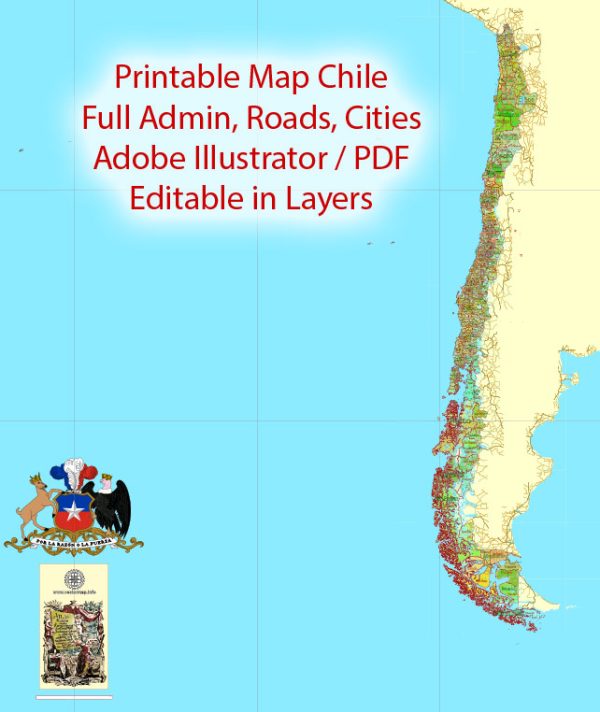Chile’s history of urban development is characterized by a complex interplay of historical, social, economic, and political factors. The process of urbanization in Chile can be traced back to the Spanish colonial period, and it has evolved significantly over the centuries. Here is a brief overview of key periods and factors in Chile’s urban development:
- Colonial Period (16th to 19th centuries):
- The Spanish colonizers established cities such as Santiago in the 16th century. These cities were centers of administration, trade, and religious activities.
- The layout of these colonial cities was influenced by Spanish urban planning principles, with a central plaza, a grid pattern of streets, and prominent religious and government buildings.
- Independence and 19th Century:
- The 19th century saw the struggle for independence from Spanish rule and the emergence of a new nation-state. During this period, urban centers played a crucial role in political and economic activities.
- The growth of mining and agriculture, particularly in the northern regions, led to the development of new urban centers such as Valparaíso and Antofagasta.
- Economic Transformation (Late 19th to Early 20th centuries):
- The late 19th and early 20th centuries witnessed significant economic transformations, including the expansion of mining, agriculture, and industry.
- Urbanization accelerated as people moved to cities in search of employment opportunities, contributing to the growth of existing urban centers and the emergence of new ones.
- 20th Century: Industrialization and Urbanization:
- The 20th century saw the industrialization of Chile, with Santiago becoming the industrial and financial hub of the country.
- Urbanization continued as rural populations migrated to cities, leading to the expansion of urban areas and the development of suburbs.
- Post-1973 Military Dictatorship:
- The 1973 military coup led by Augusto Pinochet had a profound impact on Chile’s urban development. Economic policies, including neoliberal reforms, influenced urban planning and development.
- The restructuring of the economy and privatization of services had implications for urban infrastructure and housing.
- Post-Transition Period:
- After the return to democratic rule in the late 20th century, efforts were made to address social and economic inequalities. Urban development policies focused on improving infrastructure, housing, and public services.
- Sustainable urban development and efforts to mitigate environmental challenges have become more prominent in recent years.
- Contemporary Challenges:
- Chile faces contemporary challenges in urban development, including issues of inequality, informal settlements, transportation, and environmental sustainability.
- Efforts are being made to promote sustainable and inclusive urban development, with a focus on improving public transportation, green spaces, and affordable housing.
Chile’s urban history reflects a dynamic process shaped by various historical events and economic changes, and ongoing efforts are directed towards creating more equitable and sustainable urban environments.


 Author: Kirill Shrayber, Ph.D.
Author: Kirill Shrayber, Ph.D.